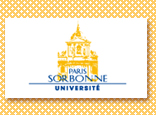|
| Accueil
> Cours
et séminaires > Maîtrise
> Maîtrise LLCE - Ressources MAN 404 |
| |
Ressources MAN 404
Navigational Metaphors and Information Spaces |
| |
|
|  Syllabus, Section III Syllabus, Section III
LITERATURE AND SPACE: HYPERTEXT
Course objective: to
show the implications of hypertextual structure for the study
of literature |
|
| |
| Links and comparisons |
| Among the major resource and gateway websites
in English Literature are the following; we will experiment on the
resources they offer for our syllabus. |
| |
| |
| |
| |
|
| |
| |
|
| |
|
|
| Cette page est valide
HTML
4.01, CSS2
et accessible A. |
|
|
|
|
 |
Rechercher |
|
| |
|
|
| |
 |
| |
|
| |
| |
|



